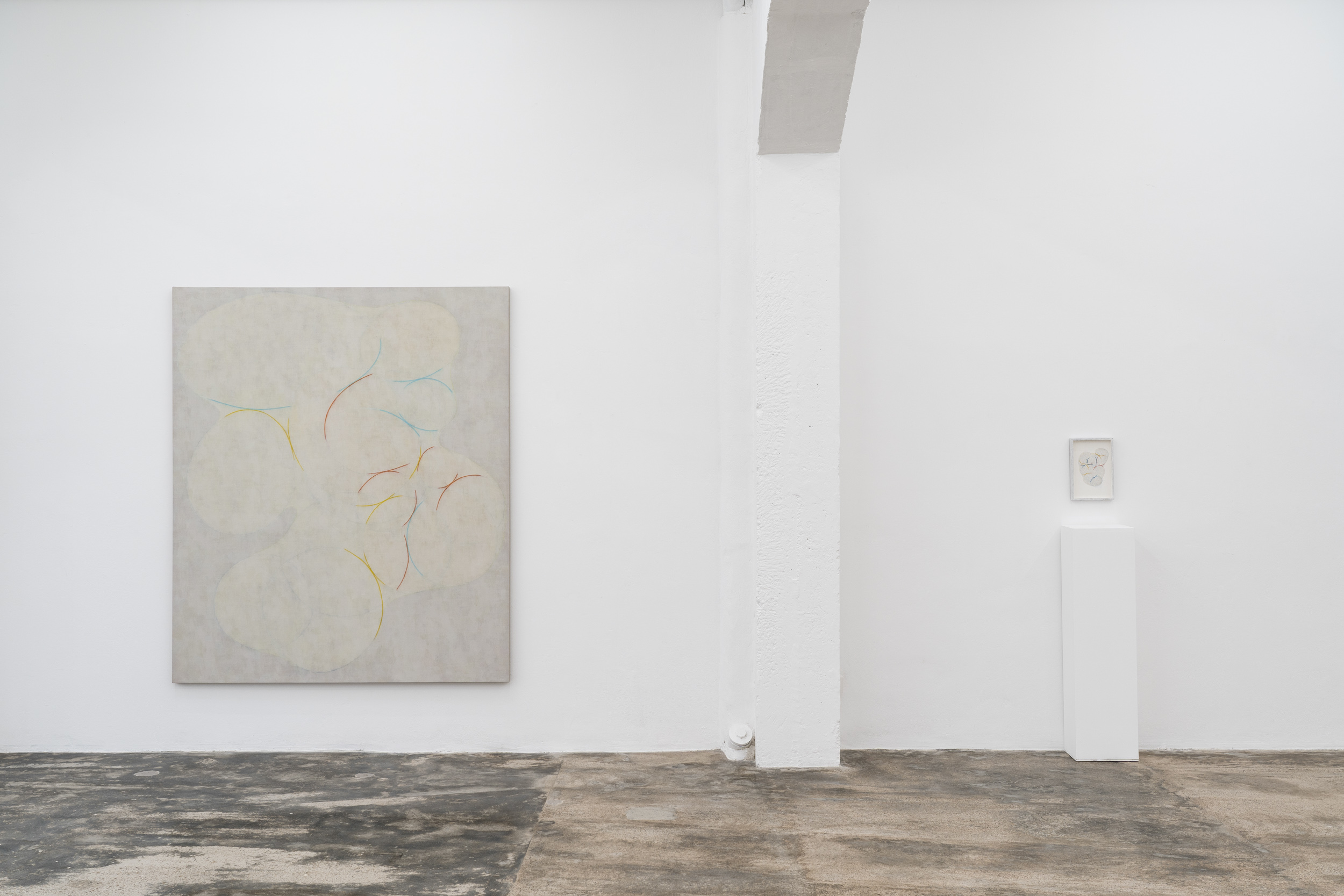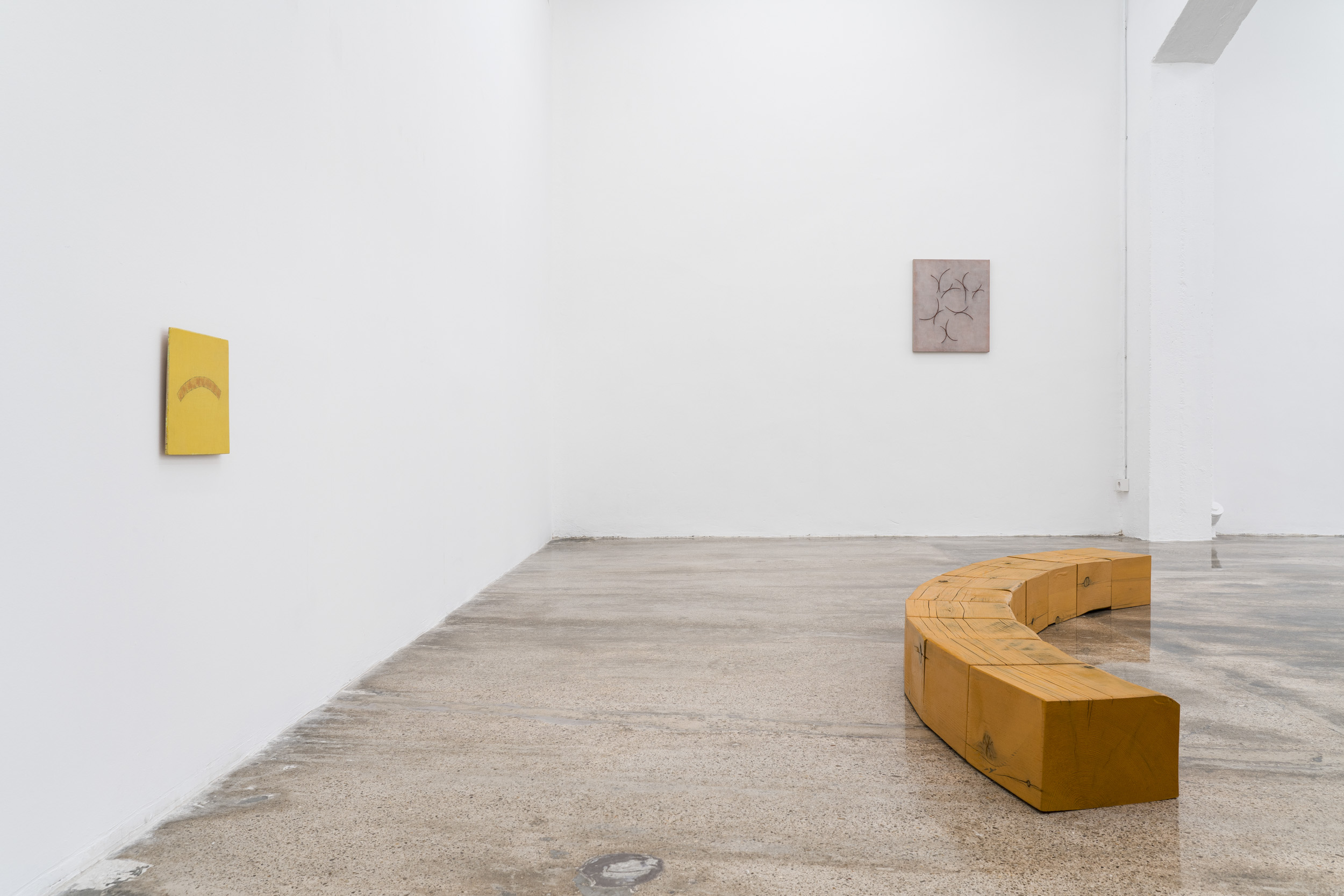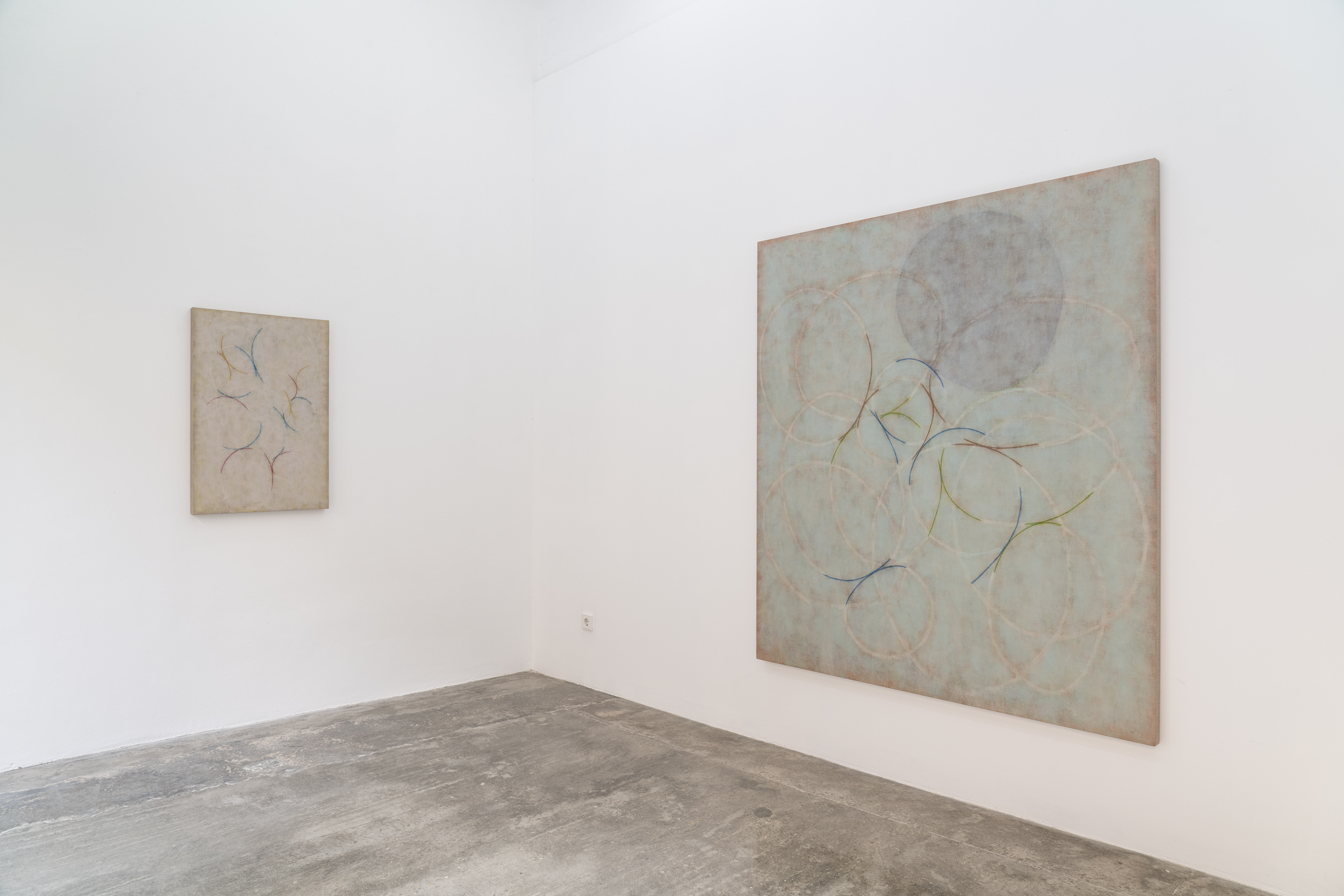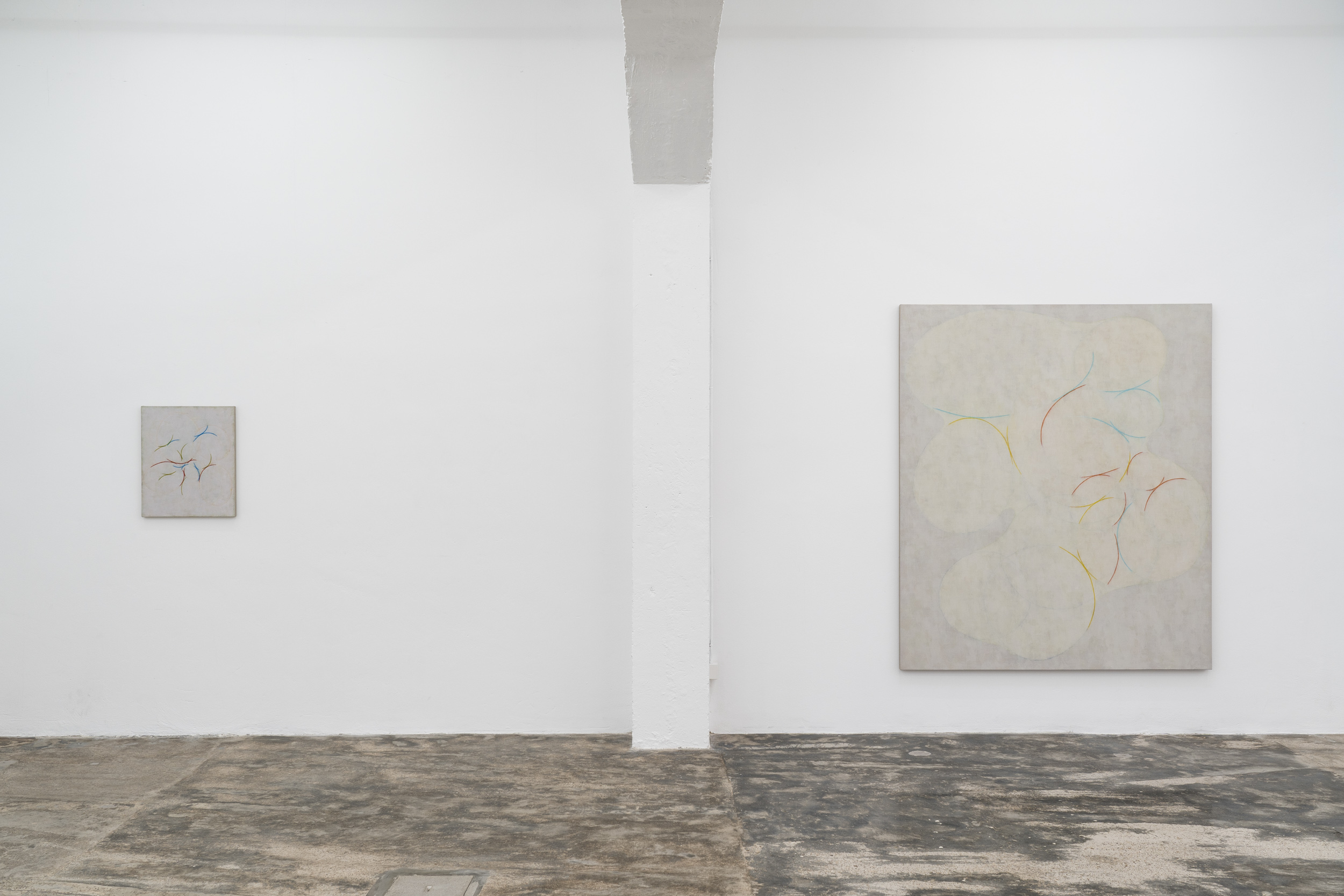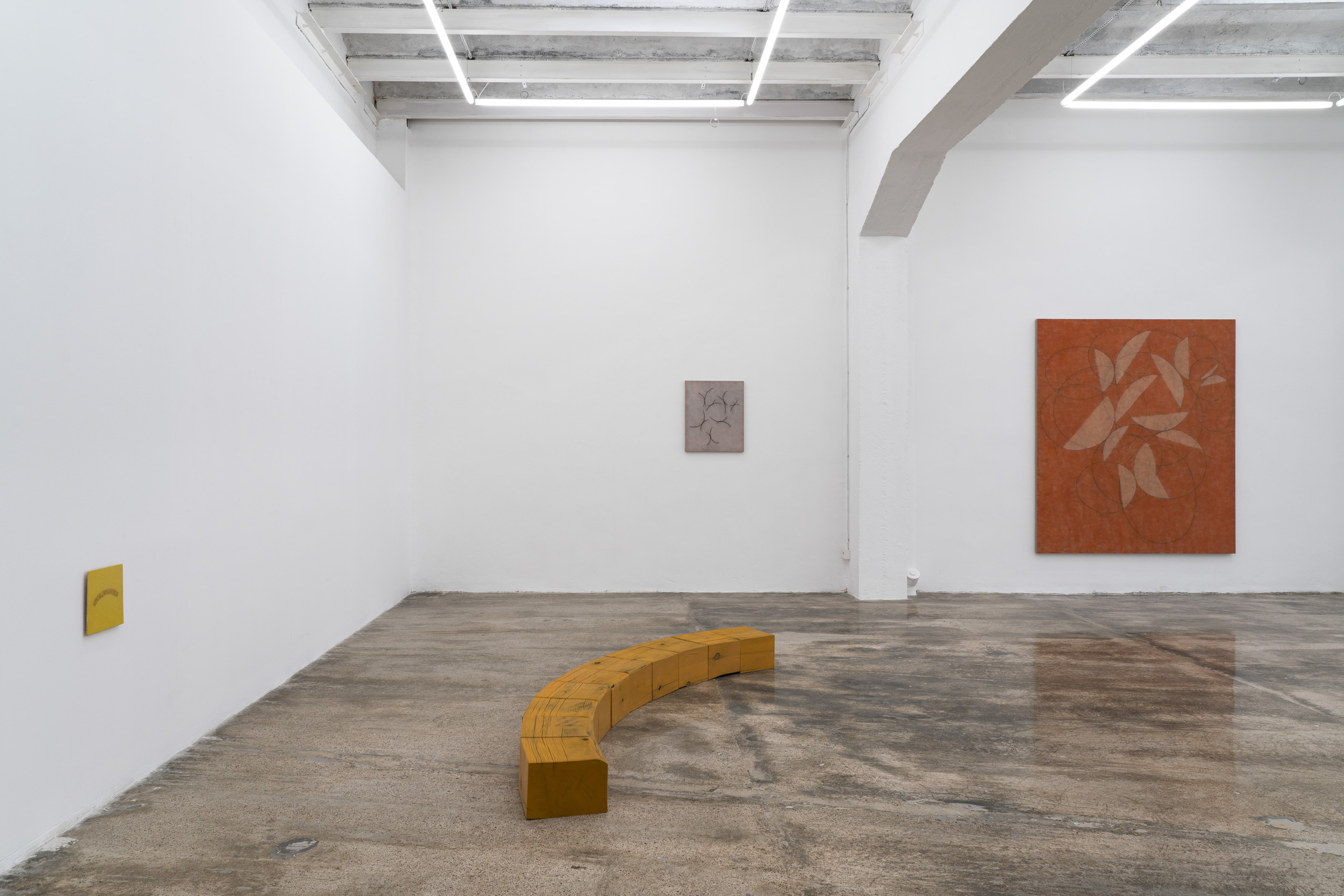MIENTRAS TU SUEÑAS
24.11.2023 –– 02.02.2024
02 - 07. 12. 2025 BAIT AND TACKLE
22.11.2025 –– 20.02.2026 EN FORMA | NIT DE L'ART
20.09 –– 14.11.2025 AÑO TRES | Art Palma Summer
05.06 –– 05.09.2025 Trazos y espacios | Art Palma Brunch
22.03 –– 30.05.2025 ARCOmadrid 2025
05.03 –– 09.03.2025 UNTITLED Art Fair Miami
04.12 –– 08.10.2024 FAIRY TALES
25.11.24 –– 24.01.25 SWAB ART FAIR 2024
03.10 –– 06.10 2024 GALAXY BALLROOM | NIT DE L'ART
21.09 - 15.11.2024 CAN ART FAIR IBIZA
26.06 - 30.06 2024 Space In Between | Art Palma Summer
06.06 –– 13.09.24 ARCOmadrid 2024
06.03 –– 10.03.24 ET FUGA | Art Palma Brunch
23.03 –– 31.05.24 SWAB Art Fair Barcelona (5-8 oct)
THE MELEE | NIT DE L'ART
23.09 ––10.11.2023 MALE MALE
23.06 ––15.09.2023 AMARILLO PÚRPURA - Art Palma Brunch 2023
25.03 –– 26.05 2023 True North
03.02 –– 17.03.2023 TERERÉ
11.11.22 –– 27.01.23 FLOOP
17.09 — 05.11.2022 Here We Go
09.07——02.09.2022
Galería Fermay is pleased to present Mientras Tu Sueñas, a solo exhibition of Alejandro Corujeira.
Twentieth century Modern Art is intrinsically related to the development of abstraction in its multiple and varied manifestations. Since its very beginnings, non-objective art has been characterised by an heterogeneity of approaches, theories and implementations that range from the geometric rigour of Suprematism, Neoplasticism and Concrete Art from the first half of the century, to the the irruption of Abstract Expressionism, Lyrical Abstraction or Minimalism, only to mention but a few of the many adventures in the field of non representational art. Through abstraction artists have tackled not only concepts related to the realm of aesthetics but also ideas related to politics, society, economy, identity or spirituality.
The use of non-representational visual elements, however, has been present throughout the history of civilisations. While some of the first prehistorical art manifestations include undefined shapes or marks, probably the result of curiosity or chance, it was from Ancient times onwards that, in parallel to the development of oral and written language, the visual vocabulary included both figurative and geometric elements, the later being mostly used as signs or decorative elements. The fascination of human beings with abstraction does not only originate from its evident aesthetic potential but it is also somewhat related to our cognitive capacities thanks to which we have the ability to think, to dream and to imagine our existence in all its complexity. Abstraction, or the capacity to perform abstract thought, is an intellectual, affective and aesthetic exercise that comes naturally to human beings, which again should not surprise us since geometry, as well as mathematics, are inherently present in nature.
The work of Alejandro Corujeira is part of such fascinating and heterodox artistic tradition. Like his predecessors, Corujeira is focused on the plastic possibilities of the medium, not only to build up his own artistic language but also to explore certain ideas that bring him closer to the realm of poetry, and occasionally also to the field of music and science. His work is characterised by almost imperceptible brushstrokes, so delicate and smooth marks that the paint is only embedded in the canvas making the represented forms look like preexisting autonomous images. The works presented in this exhibition are filled with ovals, circles, lines and trajectories that superimposed may recall the basic components of life such as molecules and cells. In this sense, there is a constant throughout his work that brings us to the concept of the primordial but simultaneously propels us to the present, even to the future. Far from causing vertigo, this analogy reminds us that, in its most basic units, our bodies, as well as the reality that surrounds us, contain information from the cosmic past of which we are all part of.
Alejandro Corujeira’s works can be considered as spatial atmospheres in which soft geometricshapes, as well as chromatic and lighting values, invite the viewer for contemplation. His work is both paused and dynamic where we see how curious and organic shapes are revealed as we look across the pictorial surface. The familiarity with such images generates an immediate connection that encourages the viewer to begin a process of introspection. From these placid compositions, however, concentrations of color emerge in the form of tangent lines that produce a kind of energy discharge; flashes of chromatic intensity that acquire their own rhythm and reveal imperceptible structures that have been buried under layers of paint. All the above is filtered by a spectral mist that allows us to see what is just necessary, thus generating the sensation of depth and space. Although Corujeira’s compositions tend towards cohesion, the elements that conform them seem light, even malleable, which make it look like as if they were undergoing a process of dynamic transformation. Observing Corujeira’s works, one has the sensation of seeing only a part of the whole, that is, a fragment that belongs to a higher logic and that, although it is not directly revealed, we can intuitively feel it.
Finally, we also find the installation piece titled Respiración where the artist transcends the flat surface of the canvas to occupy the third dimension. With this gesture, Alejandro delves into the idea described above by which the artist refers to those invisible structures and elemental units that make up the fabric of reality. Corujeira connects with the work of masters of Latin American abstraction from the second half of the twentieth century who also experimented with the second and third dimensions such as Hélio Oiticia, Lygia Pape or Jesús Rafael Soto. Although Alejandro Corujeira’s work is heir to several abstract traditions coming mainly from Europe, the United States and Latin America, it is true that the latter is perhaps the most representative - a less rigid and analytical form of expression, which, as expressed by the artists belonging to the Brazilian Neocontretist movement, are interested in aesthetically revealing a universe of existential meanings and expressing the complex reality of men.
Alejandro Corujeira’s (Buenos Aires, 1961) work has been exhibited in museums across Latin America and Europe, including at the 33 Bienal de São Paulo, São Paulo, Brazil (2018), Fundación Caja de Burgos, Burgos (2017), Museo Nacional Centro de Arte Reina Sofía, Madrid (2002), Centro de España en Buenos Aires (2005). Corujeira’s work is part of the Museo Nacional Centro de Arte Reina Sofía, Madrid, Spain; Museo de Arte Moderno de Buenos Aires (MAMBA), Buenos Aires, Argentina; El Centro de Arte Caja de Burgos (CAB), Burgos, Spain; Patricia Phelps de Cisneros Collection, New York; Jack S. Blanton Museum of Art, Austin, Texas; Colección Unión Fenosa, La Coruña, Spain; Museo de Arte Contemporáneo de Panamá, Panama; Museo de Arte Contemporáneo de Caracas Sofía Ímber (MACCSI), Caracas, Venezuela; and the Instituto Valenciano de Arte Moderno (IVAM), Valencia, Spain.
